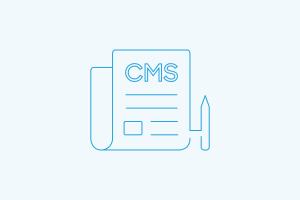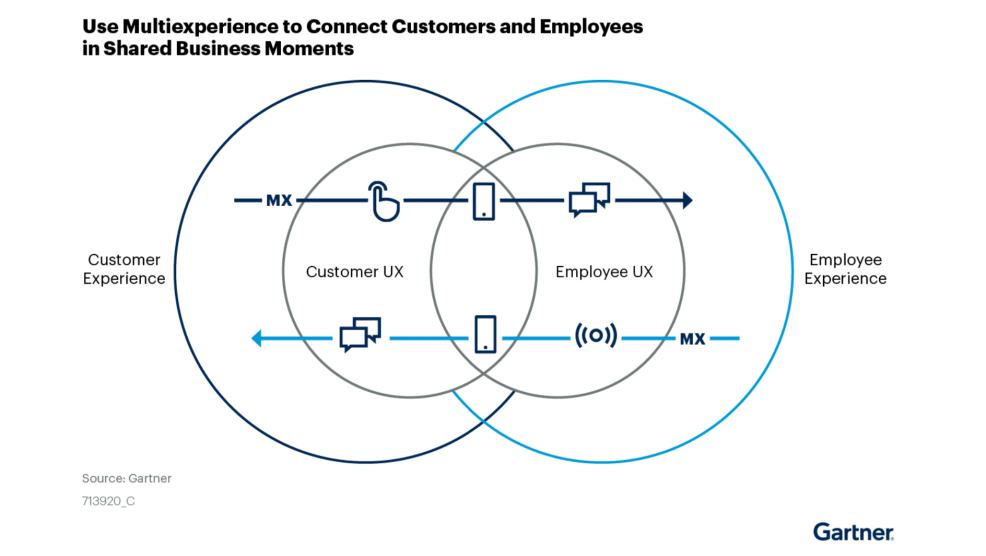A Guide to Headless CMS Use Cases

Collection :
The technology powering content management continues to evolve with headless architecture being one of the most talked about in recent years.
A CMS with a headless framework is a back end (content) that’s totally separate from the front end (display). It uses APIs to deploy content to whatever front end your organization wants versus a traditional CMS where the back end and front end are bound to each other.
A headless CMS is an exciting prospect for several reasons that we’ll get to, and this article aims to show exactly when an organization should lean toward adopting a headless architecture.
Let’s look at the most common use cases for a headless CMS.
Four reasons to use a headless CMS
If you’re looking to go beyond the constraints of a traditional CMS, you’re in the right place. Because traditional CMSs are limited to a single presentation medium, the switch to a headless CMS will free up content delivery options that may help your business grow and grow alongside it too.
1. Serve content across multiple channels
Some organizations don’t maintain or need more than a website, but advances in technology and changes in consumer expectations mean companies are looking to reach people wherever they are. That could be through a mobile app, digital signage, augmented reality training session, or — you get the picture. More channels, more content. It’s why omnichannel content distribution is so important to organizations today.
Luckily, omnichannel content distribution is the crown jewel of a headless CMS. Unencumbered by a front-end presentation layer, a headless CMS works with APIs to distribute content to whatever presentation media you want your content delivered to — IoT, VR, mobile app, voice assistant, metaverse, you name it.
New York City’s Metro Transit Authority (MTA) needed to deliver content to a bunch of different places, so the agency harnessed the power of a headless architecture. It pushed content from the same CMS that powers their website to 1,800 digital signs in more than 400 different stations across the city’s five boroughs.
Where there’s an API, a headless CMS can get your content delivered. We’ve stepped beyond traditional content consumption formats. Today, headless technology lays the foundation for accessing tomorrow’s customers where they are and where they’ll be in the future.
2. An API-first approach
With headless as your architecture, you can apply an API-first approach to ensure adaptability as business needs evolve, and new channels and media come onto the scene. APIs pull serious weight and are used widely among the most common and emerging technologies.
|
An application programming interface (API) is a software go-between that allows two applications to communicate with each other. |
API-first programming puts APIs on a pedestal — put another way, when developers build software, they do so with the end goal of using an API to talk to other applications. A headless CMS prioritizes this approach because the point of headless architecture is to remain separated from the front-end applications that display content. This front-end freedom, in turn, gives an organization unlimited content delivery options as long as the appropriate APIs are in place. This flexibility isn’t limited just to front-end delivery but to all sorts of different integrations.
For example, if an organization wanted to rebrand its website, an API-first approach would enable them to rebuild their front end without tearing down the entire site from scratch. The separated back end grants the ability to transfer that content via API to whatever front end you want to display — now and down the road.
How does this approach support a headless architecture over time? The number of applications and technical media to which content is sent grows ever-more, and because APIs are pivotal to that transmission, API technology is constantly evolving to keep up with content-delivery demands.
Having APIs top of mind is a perfect way to stay future-ready.
3. Manage global, multiplatform content
A headless CMS allows organizations to focus on the scalability of content across platforms, technologies, and languages in regions worldwide. Because APIs are the lynchpin of a headless CMS, managing content across an array of channels is a much less demanding task.
The separate back end is where content lives. This single source for your content makes content management, organization, version control, and governance easier. So, when a multinational, multi-language enterprise has to deploy content updates across numerous platforms, those updates come from one place — a huge scaling advantage for businesses with a growth mindset.
For instance, a financial services company wanted to scale its consumer-facing business tool and found headless to be the answer. The organization went on to deploy the tool in 34 European, Latin American, and Caribbean countries. The company saw its activity from current customers increase by 90%, and new customer accounts grew too.
4. Deliver exceptional customer experiences
Organizations choose a content management system to find better ways to deliver content to customers. But customers aren’t the only folks a headless CMS helps — your own team can benefit, too.
Going beyond just CX, Gartner® defines the term total experience (TX) as "a business strategy that integrates employee experience, customer experience, user experience, and multiexperience across multiple touchpoints to accelerate growth. Total experience can drive greater customer and employee confidence, satisfaction, loyalty, and advocacy through the holistic management of stakeholder experiences.*"
Image courtesy of Gartner**

The front-end agnostic foundation of a headless CMS fundamentally enables better multiexperience content for everyone.
Developers never have to wait for something on the front end to be done while they do their back-end work — and vice versa. Front-end work, edits, and even full redesigns are easier for everyone involved. Being decoupled from the back end means that front-end redesigns are completely separate from the back end. But, when you bring it all together, the headless system stores and deploys unified content still tailored to each presentation medium you need. This freedom increases speed to market and is great for internal stakeholders, with the benefits extending to customers too.
We already mentioned how the number of digital media that your customers use to access content is only growing. As that number climbs and as audiences lean more heavily on digital platforms, expectations about seamless, consistent, cross-platform experiences will only rise.
You’ve probably heard of the Pacific 12 (Pac-12) Conference for college sports. The Pac-12 has its own dedicated media company — Pac-12 Networks — and, for the massive conference fan base, wanted a new collection of websites that focused on team schedules, video, mobile optimization, social media and engagement, and content creation. Pac-12 Networks built 3,000+ landing pages and migrated all video content — pre-game, live, and post-game — to the new website. A headless CMS smoothed these transition and helped double the number of hours that people watched video across their platform.
In this example alone, we see that a headless CMS not only makes omnichannel distribution easier for organizations, but facilitates consistent content and brand experiences for users too.
The bottom line
Like anything in business, new technology — regardless of its benefits — isn’t a magic fix, hack, or shortcut to success. These things take planning and a great deal of internal collaboration to map out business use cases and execution strategy.
If any of these use cases apply to your organization, a headless CMS may be in your future. Still, the decision is one that requires alignment among content and development stakeholders.
Fortunately, we’re here to walk you through the process. Get in touch; we’d be happy to show you.
—
*Gartner, Gartner Top Strategic Technology Trends for 2022, https://www.gartner.ca/en/information-technology/insights/top-technology-trends, as on November 15, 2022.
**Gartner, Transcend Omnichannel Thinking and Embrace Multiexperience for Improved Customer Experience, by Jason Wong, Don Scheibenreif, and Gene Phifer. Refreshed 28 June 2021, Published 17 February 2020
GARTNER is a registered trademark and service mark of Gartner, Inc. and/or its affiliates in the U.S. and internationally and is used herein with permission. All rights reserved.


